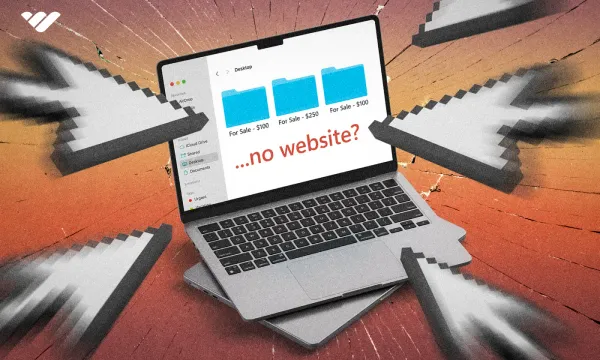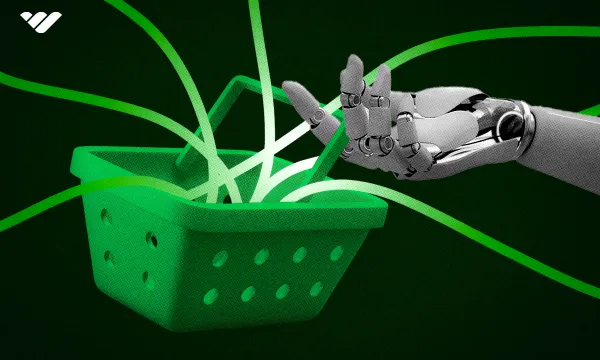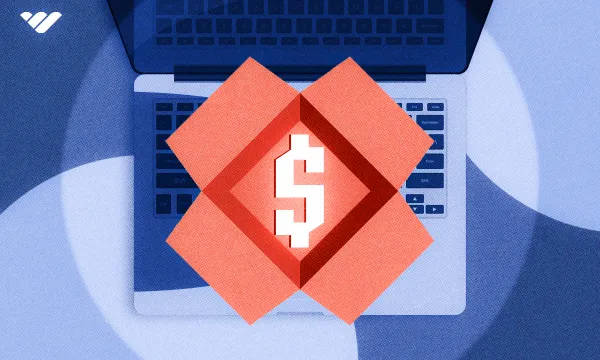The idea that you need your own website to sell digital products is quickly growing outdated. Whether you're selling courses, ebooks, or access to exclusive online communities, the fact of the matter is that a website is no longer a prerequisite to succeed at selling online.
In fact, having a website might prove to be more of a hindrance than an asset. Oftentimes, you're better off focusing on scaling your business instead. With that said, it can be tricky to find the right place to sell digital products. No worries—we're here to help you get started.
In this comprehensive guide, we'll tell you everything you need to know about selling digital products without having a website, from getting started to growing your business and marketing it.
Jump to:
- Why You Don't Need a Website to Sell Digital Products
- Where Can You Sell Digital Products?
- How to Sell Digital Goods Without a Website in 3 Steps
- Tips to Successfully Sell Digital Products
Why You Don't Need a Website to Sell Digital Products
You're on the right track if you're looking for ways to sell digital products. There are lots of benefits to going digital instead of setting up a brick-and-mortar store, and if your wares are strictly digital, the process is even easier. This is why selling things like courses, templates, graphic designs, or even trading tips is increasingly popular.
Surprise: Most entrepreneurs like you who engage in digital commerce don't use their own websites to do so.
So, here are a few reasons why you should give up on the daunting task of mastering WordPress and turn to other, better solutions to support your business.
#1. Not Using a Website Is Easier
Not having a website is more simple and will save you time. Depending on the complexity of your digital home address, to have a website you'd most likely have to start by getting a domain and access to some space on the web. Next, you might have to create dozens of pages with things like FAQs, product listings, and more.
You might use a website builder—which is often deceptively harder than it seems. Otherwise, you'd have to code it all on your own or hire someone to do it for you. However, these are just the steps required to get started, and the work doesn't end there.
#2. Websites Can Be Expensive

Those annoying things we just mentioned above? Most of them cost money, and the costs can quickly add up. Whether you pay for website hosting and domain separately or in one package, that's a subscription that will always be there, regardless of the number of sales your website is pulling. It's very punishing for new business owners who may be spending more money than they are making.
Perhaps the bigger cost is hiring someone to manage it, whether it's to set up a web store or to create product listing pages. Such services can rack up costs that are in the thousands.
#3. Many Websites Lack Crucial Tools
You may be offering the best digital products in your field of choice, but having a website won't give you the tools that can help you get more sales.
Depending on the method you choose for selling your products, you might be able to benefit from:
- Analytics and marketing tools
- An integrated payment system
- Access to a wider audience
- Community and support
- Reduced overhead costs
With all of the above factors in mind, running your own website may put you at a disadvantage, because as well as taking care of your digital products and customers you will also need to be handling everything that is involved in keeping your website up and running.
Where Can You Sell Digital Products?
As mentioned, you do not need to have a website to sell digital products - you can sell your products on marketplaces, third-party websites, and social media.
Your best bet is to create your own online storefront on a platform that offers comprehensive support for selling digital products. There are several options for this, such as the Whop marketplace.
Whop

Whop is the ideal solution if you want to sell digital products. It offers a streamlined, user-friendly interface adapted to match each product type, including direct Discord integration for community access and powerful APIs for software distribution.
Whop lets you create your digital storefront without the hassle associated with running a website. It supports a wide range of business models, so it doesn't matter if you're starting a reselling company or you're a budding entrepreneur selling financial coaching—Whop's got you covered.
You can use Whop to sell the following:
- SaaS
- Discord access
- Subscription services
- Courses
- Templates
- Ebooks and PDFs
- Graphic designs and artwork
- Trading and investment tips
- Coaching services
- Automation tools and bots
- Various other digital products
Signing up with Whop is easy, and once you're registered, you can start selling to a wide audience of existing Whop customers alongside your own client base. You can use the Whop marketplace or create handy checkout links that take the customer directly to pick a payment option.
Whop provides you with everything you need to run your online business, ranging from a transparent payment processing system to comprehensive analytics tools that will help you figure out trends and land more sales.
Social Media
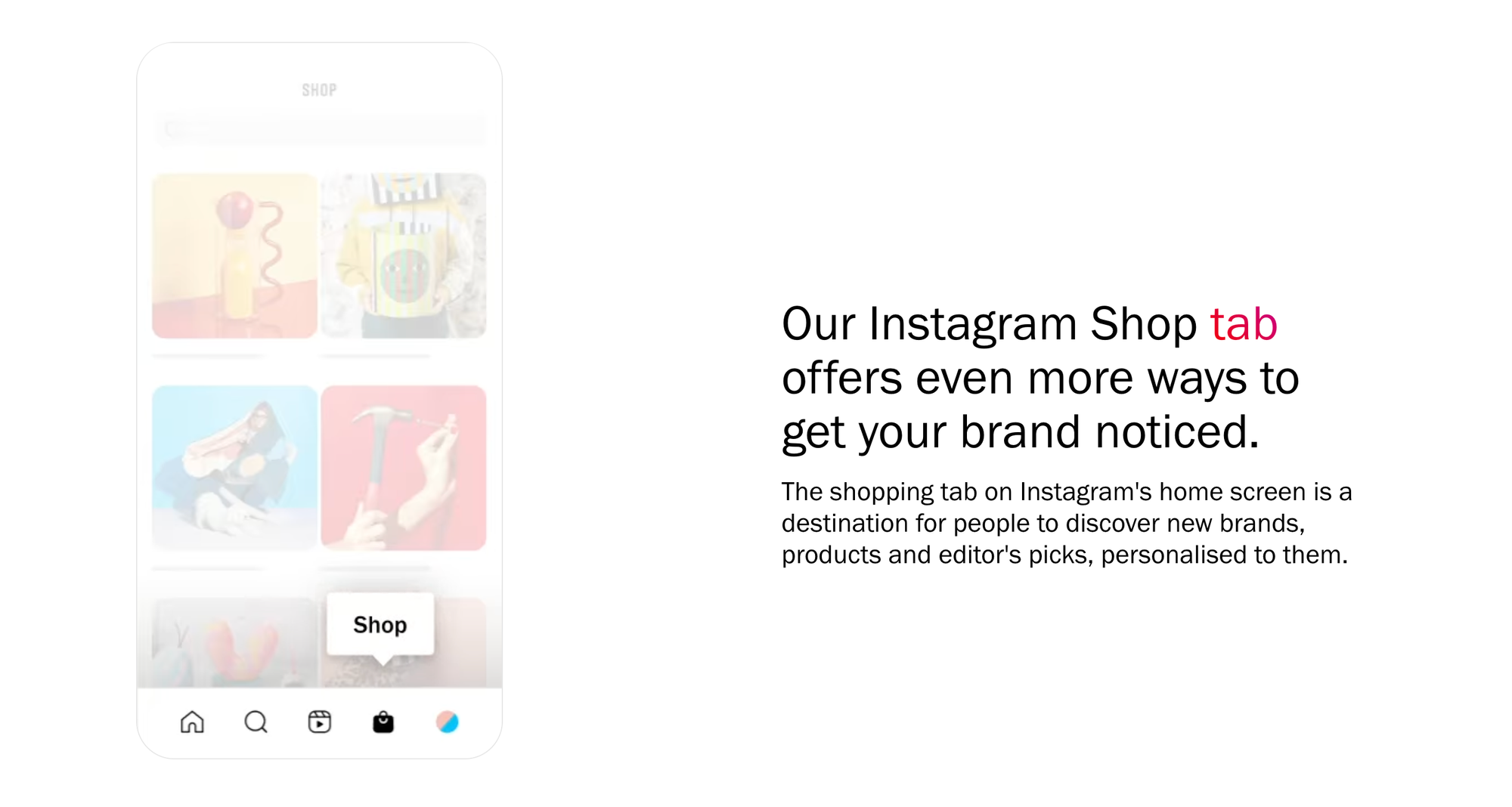
Social media is an asset for selling digital products. You can use it as a platform to sell through, but also as a way to supplement your digital storefront with more traffic. Many entrepreneurs diversify and advertise on various social media platforms to funnel sales toward their online storefronts.
You don't have to limit yourself to a single platform, either. Depending on your product, some forms of social media will be more successful than others, so treat it as a bit of a trial-and-error process until you figure out what works best for you.
The four most popular social media platforms for selling digital products include Facebook, Instagram, TikTok, and X (which, let's be honest, we're all still referring to as "Twitter"). Let's take a look at the selling options each social media platform in more depth.
Facebook has several options that support selling various products, be it a blender or a course on cryptocurrency trading. To start, you can use the Shopping feature and post your items up for sale. Unfortunately, the Facebook Marketplace cannot be used for digital goods, so that's out the window.
Selling in groups is also an option, but the admin of the group has to enable it first.
Be wary, though, that Facebook can be ridden with scammers, so selling through it is challenging. It's often better to set up a page for yourself or your business and use it to advertise your products, then transfer the transactions to a secure platform like Whop.
Selling digital products on Instagram works much the same way as it does on Facebook, which is unsurprising, given that both are owned by the same company. You can list your products using the Shopping feature or encourage sales through DMs; again, the latter is quite risky.
X (Twitter)
X doesn't support direct sales. Therefore, negotiating with buyers in DMs and agreeing to off-platform payments is your only option, which isn't very safe. Instead, it's better to use X to market yourself and redirect buyers to a platform that provides secure transactions.
TikTok
TikTok is a huge social media platform, and TikTok Shop allows sellers, creators, and affiliates to sell directly through TikTok. However, it is not possible to sell digital products through TikTok Shop. Still, TikTok is a popular choice for advertising digital products, including personal coaching sessions, ebooks, and Discord or Telegram communities.
Landing page
Building a website can be a hassle, but a landing page is still a website—just in a so-called "lite" version. For many entrepreneurs and businesses, a landing page will suffice.
This is a standalone web page created for marketing and selling your products. It's where your customers will land if they click on a link in an email newsletter, on social media, and similar sources. It doesn't have any sub-pages or specific product listings, which makes it a decent option if you sell very few products and don't want to distract prospective buyers with too many links.
Remember that your landing page will still need to be connected to an ecommerce platform to support sales. You can use Whop's checkout links, which blend with the landing page and offer a secure and seamless shopping experience.
How to Sell Digital Goods Without a Website in 3 Steps
Now that you know your options, how do you get started with selling digital products without a website? Don't worry—we'll go over the entire process below, and then give you some tips to help your products be seen.
Pick Your Platform
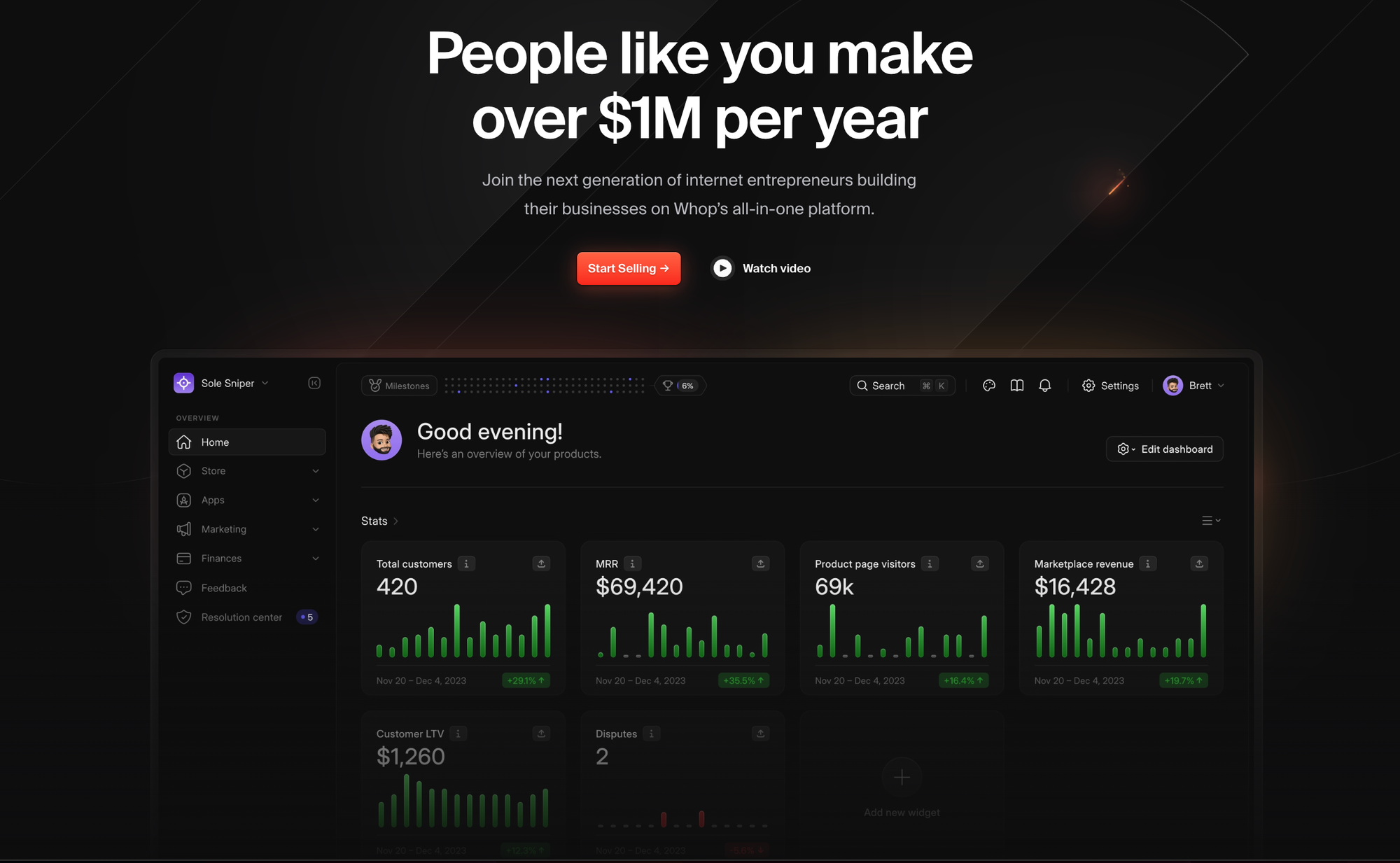
Start by deciding where you're going to sell your digital products. You don't have to limit yourself to a single option at this stage, but it's a good idea to pick a platform that will become your main hub for sales and advertising.
Whether you're a seasoned entrepreneur or a self-starter with a plan and a budget, Whop is the best choice if you're looking to sell digital products at maximum profit and with minimal hassle.
Pros of using Whop include:
- No monthly subscriptions, only an industry-leading 3% fee per transaction
- User-friendly dashboard that can be tailored to your specific needs
- Payment processing system with support for the most popular payment methods, including crypto
- Whop's API can be integrated with your business, including checkout links
- Sending license keys or granting access to private groups is automated
- Attractive affiliate programs to reward your customers and boost sales
- Robust analytics and marketing tools
- Custom-made solutions to help you scale your business
- Unparalleled 24/7 customer service
Signing up with Whop is easy as pie. To get started, do the following:
- Head on over to Whop.com and click "Start Selling."
- Create an account.
- Pick out a business name and choose the type of products you want to sell.
- Navigate to the Whop Dashboard.
- You're all set to list your first product! Fill out the pricing, and the description, and add a logo for your brand or a picture of the product.
- All sorted? Time to send your listing out into the world and start getting your first sales!
Research the Market
Now, grab a pen (or an Excel spreadsheet) and do some digging.
Look through the marketplace or through other listings on the platform you've registered on, searching for similar products or niches. For instance, if you're hoping to sell ebooks on weight loss and coaching calls, look into nutritionists, physical trainers, and wellness influencers on your platform(s) of choice. For trading tips, look into communities that offer investment coaching or crypto advice—for instance, right here on Whop.
When researching, make notes on some of the following:
- Your competitor's pricing
- Keywords used in product listings, both in the title and the descriptions
- The type of images that are often used
- Unique selling propositions
- The number of similar offerings available
Knowing the above will help you learn your target audience and make it much easier for you to market your products accordingly.
List Your Range
Equipped with all the knowledge you need, spend some time setting yourself up for success and creating creative product listings.
Select digital products that align with your market research. If there's a glaring gap in the listings of your competitors, you can fill it; if the market is contested, you might have to undercut the competition to draw in your first customers.
Package and brand your products effectively. Read the descriptions of similar products and brainstorm yours to make them even better. Next, use a graphic design program—even a free tool like Canva will do—and create eye-catching hero images.
It's also a good idea to include screenshots of your product; these can be watermarked if you want.
Start Marketing
Marketing is one of the pillars of launching a successful digital product, so once your range is live, don't delay your marketing efforts. You can do as little or as much as you want, but generally, the more the better.
For a start, advertise your product on social media. If you already have a following, you can link to it directly, but if you're a new creator, consider sharing some useful content in your niche for free and sneak in some mentions of your product where applicable.
Consider starting an email newsletter, buying ad space (such as on Facebook), or working with an influencer if you have a marketing budget. Every new person who becomes interested in your products is a potential sale, so there's no end to how useful proper marketing can be.
Tips to Successfully Sell Digital Products
Once you've started selling digital products without a website, here are some sure-fire ways to put your offerings in the spotlight.
Tweak Your Product Pages
It can be tempting to just create a barebones product page and wait, but unless you have a massive following, that often won't be enough. The competition is pretty fierce, so it's better to be ahead of the curve.
Once you're ready to scale up your business, look into things such as:
- SEO: Researching relevant keywords and making sure they're present in the title and product descriptions can help your listings be seen by customers.
- Promotions and discounts: Offer introductory prices or bundles to attract first-time buyers.
- Utilize hashtags: When posting on social media, use relevant hashtags to maximize visibility.
- Analytics and feedback: Use sales data to refine and improve your product offerings continuously.
Set Up an Affiliate Program
How to get more customers? By letting your current customers do some of the work for you! Some online storefront platforms let you set up exciting affiliate programs.
With Whop, you can either make a single user a custom affiliate or let anyone who buys your products then go on to invite their friends to try them out. Doing this promotes brand loyalty and gets you more traffic.
Encourage Reviews
As a new entrepreneur, reviews and testimonials carry a lot of power. If your product racks up a high rating and gets some praise from customers, it'll be much likelier to generate further sales.
Don't be afraid to encourage your customers to give reviews in the way that works best for your product. For instance, if you're selling product keys, leave a note in the delivery email that reminds the customer to rate your product.
Start Selling Digital Products With Whop Today!
Selling digital products is the perfect way to harness the power of the internet. As this is a modern business, it's a good idea to think outside the box and abandon things that generate unnecessary overhead costs. Instead, turn to a platform that will help your business thrive, pick your target audience, create, and sell!
If you want to join the ranks of entrepreneurs who redefine the idea of ecommerce and make thousands of dollars out of the comfort of their homes, all you need to do is join Whop. Signing up is free and takes less than 10 minutes.
Whop is an industry leader, with almost 2 million memberships sold and a massive over 100 million dollars in processed transactions. Whether you're looking for passive income or making this a full-time job, Whop is the best way to sell digital products without a website.
👉 Sign up and start getting your first sales today!
